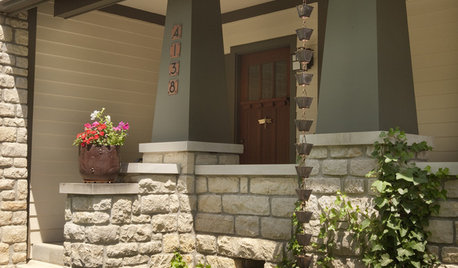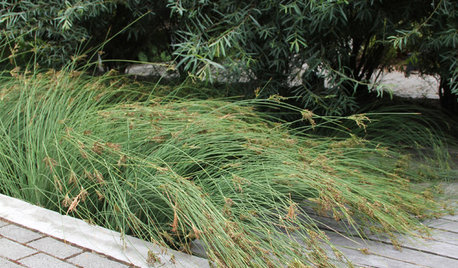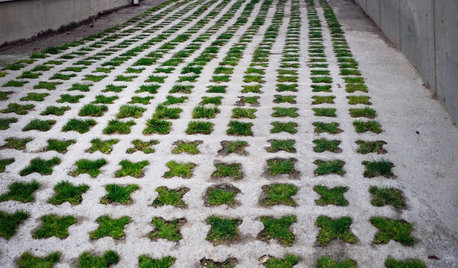Puddling Clay
green_skinnydipper
16 years ago
Related Stories

GARDENING AND LANDSCAPINGDesign With Weather: Introduce a Rain Chain
Create something beautiful with the runoff from your roof
Full Story
GARDENING GUIDESGarden Myths to Debunk as You Dig This Fall and Rest Over Winter
Termites hate wood mulch, don’t amend soil for trees, avoid gravel in planters — and more nuggets of garden wisdom
Full Story
LANDSCAPE DESIGNHow to Move Water Through Your Landscape
Swales, underground pipes or a mix of both: There’s more than one way to distribute water in the garden
Full Story
GARDENING GUIDESProtect a Precious Resource With a Rain Garden
Promote pure water and a beautiful landscape with a garden design that makes the most of the rain
Full Story
EARTH DAYHow to Build a Greener Driveway
Install a permeable driveway to keep pollutants out of water sources and groundwater levels balanced
Full Story
GREAT HOME PROJECTSHow to Give Your Driveway and Front Walk More Curb Appeal
Prevent injuries and tire damage while making a great first impression by replacing or repairing front paths
Full Story
BASEMENTS10 Ideas for an Anything-but-Boring Basement
Let your imagination run wild and get the most bang from your basement
Full Story
FARM YOUR YARDHow to Build a Raised Bed for Your Veggies and Plants
Whether you’re farming your parking strip or beautifying your backyard, a planting box you make yourself can come in mighty handy
Full Story
NEUTRAL COLORSColor Guide: How to Work With Beige
If you yawn and dismiss it, you're missing out on beige's infinite subtleties and the possibilities it brings to room designs
Full Story
GARDENING GUIDES10 Solutions for Soggy Soil
If a too-wet garden is raining on your parade, try these water-loving plants and other ideas for handling all of that H2O
Full Story






sleeplessinftwayne
green_skinnydipperOriginal Author
Related Professionals
Erie Landscape Architects & Landscape Designers · Wakefield Landscape Contractors · Beachwood Landscape Contractors · Camp Verde Landscape Contractors · Centereach Landscape Contractors · Chesapeake Ranch Estates Landscape Contractors · Cincinnati Landscape Contractors · Dallas Landscape Contractors · Framingham Landscape Contractors · Mason Landscape Contractors · New Baltimore Landscape Contractors · Plymouth Landscape Contractors · South Lake Tahoe Landscape Contractors · Welby Landscape Contractors · San Pablo Landscape Contractorssleeplessinftwayne
mgeca
green_skinnydipperOriginal Author
sleeplessinftwayne
green_skinnydipperOriginal Author
sleeplessinftwayne
green_skinnydipperOriginal Author
sleeplessinftwayne
green_skinnydipperOriginal Author
sleeplessinftwayne
mgeca
sleeplessinftwayne
mgeca
sleeplessinftwayne
green_skinnydipperOriginal Author
mgeca
sleeplessinftwayne
mgeca
green_skinnydipperOriginal Author
sleeplessinftwayne
green_skinnydipperOriginal Author
sleeplessinftwayne
green_skinnydipperOriginal Author
mgeca
green_skinnydipperOriginal Author
sleeplessinftwayne
mgeca
green_skinnydipperOriginal Author
sleeplessinftwayne
mgeca
green_skinnydipperOriginal Author
mgeca
green_skinnydipperOriginal Author
mgeca
njbiology